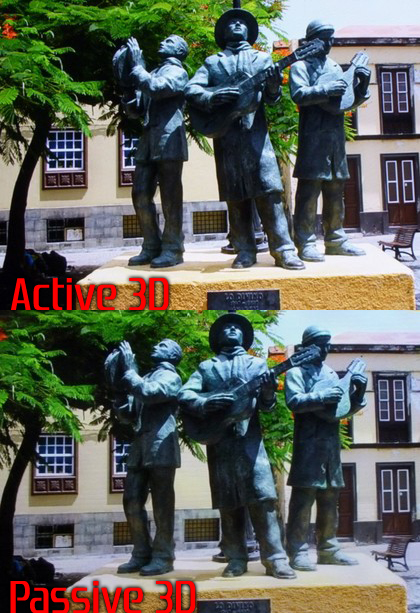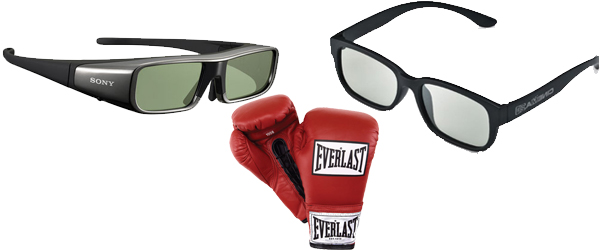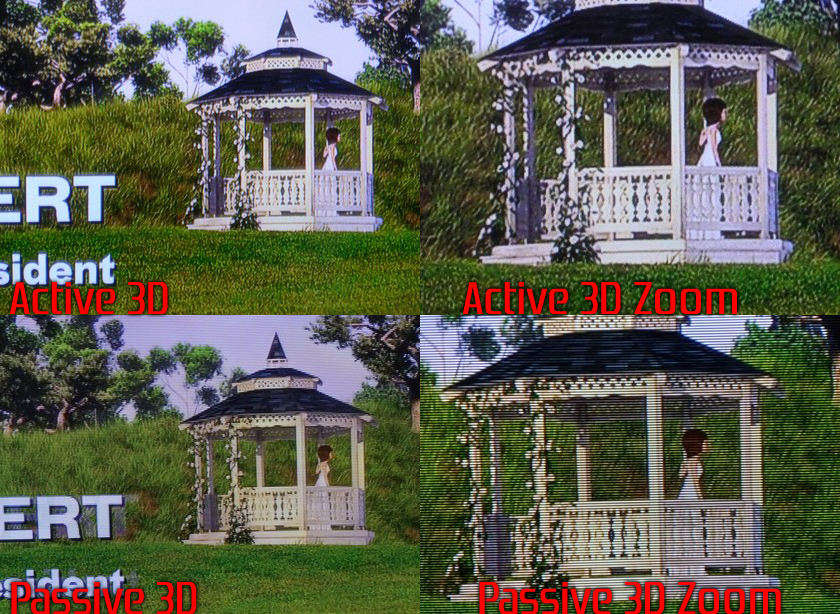LG has recently kicked off a new marketing campaign in which the Korean electronic maker claims that 4 out of 5 people in a 3D TV test chose LG over Sony and Samsung. Of course, with such a bold claim, it’s only reasonable for Sony to respond back, and that’s exactly what they have done. Outside of the nature of the claims lies another debate however: the difference between Active 3D, which both Sony and Samsung use, and Passive 3D, which companies like Vizio and LG use.
Sony starts of the rebuttal by rightly pointing out who the survey was conducted by, which happens to be LG, who is trying to sell you their product. This is like going to a plastic surgeons office and expecting them to tell you that you don’t need something done. Of course LG will do what it can to sway the survey results into something favorable for them. This doesn’t mean that LG is somehow evil and the only company doing this, but it is a factor none the less. On the other hand, Sony points readers towards an NPD study conducted in May 2011 in which “people who walk into a store choose active technology from Sony, and even Samsung, six times more often than they select passive technology like LG’s.” Both Sony and Samsung were quick to note that NPD retail sell-through numbers for last month showing that nearly 90 percent of 3D TV purchases were of the active-shutter variety. Sony goes on to say,
Now, that type of independent research paints an entirely different picture than the claims made by LG. So let me take this opportunity to share some facts about why active 3D provides a better viewing experience than passive 3D.
So what is the difference between active and passive 3D? Passive 3D glasses are generally the 3D eyewear you see at movie theaters with polarized screens and plastic housings. Using filters to split the image, passive glasses are capable of receiving 1080p video, with one caveat. Your eyes receive a total of 1080p, meaning that only 540 lines are delivered to each eye, thus bringing the image quality under what is HD (and 720p of that) and very close to SD which is 480i. With a filter in place, you will also notice a reduced image brightness and clarity. On the other hand, active 3D glasses are capable of and do deliver 1080p to each eye, thus doubling the resolution. With the lack of filter in place as well, your video is brighter and much more crisp. As CNET reported in their own findings,
We expected this difference because, as Vizio, LG, and other purveyors of 2011 passive 3D TVs admit, the system they use halves the effective 1080p resolution, delivering only 540 lines to each eye. We just didn’t expect it to be so obvious. As Matt said, it makes you appreciate how good “1080p to each eye” looks.

Passive 3D
With the lack of resolution, you can surely expect to see a difference in your 3D viewing experience, whether it be playing games in 3D, watching movies or viewing a sporting event like the U.S. Open.
Graphics like the Imax 3D logo also had jagged edges along the curves, and we saw the effects of the jaggies in numerous other areas that included any semistraight moving lines. A tennis match from the U.S. Open provided an even more glaring example: the lines of the court were jagged and the jaggies moved distractingly as the camera tracked player movement.
So if there is total proof that active 3D looks better than passive 3D, why would companies like LG and Vizio adopt it in their televisions? The simple answer is price of the technology. In some ways, passive is already out of date, which makes the implementation of the technology in 3D televisions cheaper and the price of the 3D glasses even cheaper. This means that consumers can expect to pay less for their television set and additional glasses. However, the flip side of this argument is that if you are looking to jump into a new technology, why would you handicap yourself from the start by buying into older technology. Especially if we consider that just last year, Sony’s Active Shutter glasses were priced around $150 for one and today, you can purchase a pair for $139 and the new glasses which are lighter, thinner and rechargeable, compared to last years model for $69. My point is that the cost around 3D continues to drop. Last year, you couldn’t purchase a 3D set from Sony for under $3,000, and you can now find sets that start just over $1,000 and Sony will be releasing the PlayStation-branded 3D TV this fall for $499 which includes active shutter glasses, a copy of Resistance 3, and can play back 2 different 3D images at once. None of this would be possible in the passive shutter world.
Hit the jump to see additional picture comparisons of active 3D vs. passive 3D.

Discuss:
Have you purchased a 3D TV yet? If so, which brand and why? If not, what is holding you back? Do you favor either technology?
[Source: CNET & Sony Electronics Blog]



You must be logged in to post a comment.